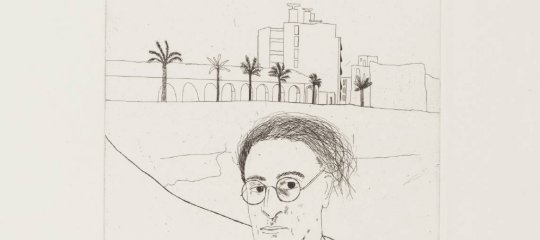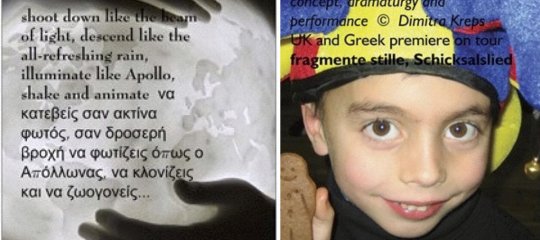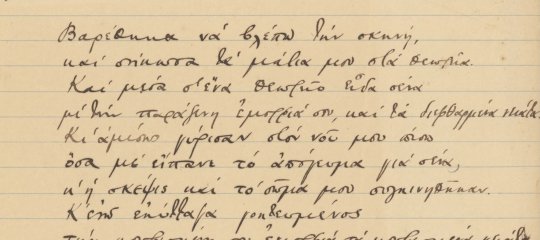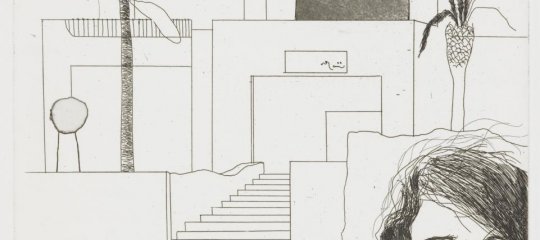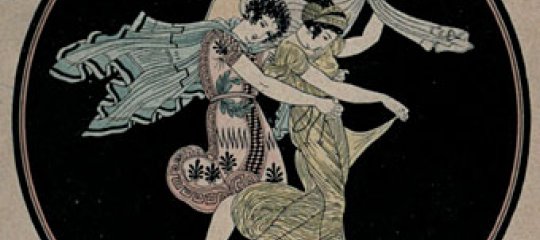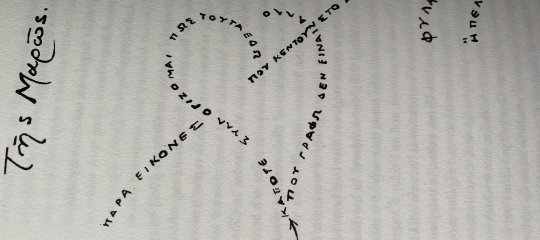Οικογένειες Λέξεων - Ιωάννης Ζηκούδης
|
ΤΟ ΣΠΙΤΙ
|
THE HOUSE |
Η ΠΟΛΗ |
THE CITY |
|
το δωμάτιο |
room |
το σπίτι |
house |
|
το πάτωμα |
floor |
ο δρόμος |
street / road |
|
η σκεπή / η οροφή |
roof |
η λεωφόρος |
avenue |
|
ο κήπος |
garden |
η πλατεία |
square |
|
η κουζίνα |
kitchen |
το κέντρο |
center |
|
το μπάνιο |
bathroom |
η γειτονιά |
neighborhood |
|
το υπνοδωμάτιο |
bedroom |
η εκκλησία |
church |
|
το καθιστικό |
living-room |
το νοσοκομείο |
hospital |
|
ο διάδρομος |
corridor |
το σχολείο |
school |
|
το ασανσέρ |
lift / elevator |
το πανεπιστήμιο |
university |
|
η αυλή |
back yard |
το δημαρχείο |
city hall |
|
το γκαράζ / πάρκιν |
car parking space |
η αγορά |
market |
|
η σκάλα |
stairs / staircase |
ο κινηματογράφος |
cinema |
|
η κυρία / κεντρική είσοδος |
main entrance |
το μαγαζί / κατάστημα |
shop |
|
το κατώφλι |
doorstep |
το μουσείο |
museum |
|
η πόρτα |
door |
το θέατρο |
theater |
|
το πεζοδρόμιο |
pavement |
το εστιατόριο |
restaurant |
|
η πολυκατοικία |
block of flats |
το ξενοδοχείο |
hotel |
|
το διαμέρισμα |
apartment |
το κτίριο |
building |
|
|
|
|
|
|
ΤΟ ΔΩΜΑΤΙΟ |
THE ROOM |
ΤΟ ΣΧΟΛΕΊΟ |
THE SCHOOL
|
|
ο τοίχος |
wall |
ο δάσκαλος |
teacher |
|
το πάτωμα |
floor |
ο μαθητής |
pupil |
|
το ταβάνι |
ceiling |
ο φοιτητής |
student |
|
το τραπέζι |
table |
το γραφείο |
office |
|
η καρέκλα |
chair |
ο πίνακας |
blackboard |
|
το χαλί |
carpet |
το στυλό |
pen |
|
το φως |
light |
το μολύβι |
pencil |
|
η λάμπα |
lamp |
ο χάρακας |
ruler |
|
ο καναπές |
sofa |
η γόμα |
rubber |
|
το γραφείο |
desk |
το βιβλίο |
book |
|
το κρεβάτι |
bed |
το τετράδιο |
notebook |
|
τα έπιπλα |
furniture |
η εργασία |
homework |
|
η πόρτα |
door |
η τσάντα |
briefcase |
|
το παράθυρο |
window |
το διαγώνισμα |
test/exam |
|
η κουρτίνα |
curtain |
η ερώτηση |
question |
|
το συρτάρι |
drawer |
η απάντηση |
answer |
|
η ντουλάπα |
closet |
το προσωπικό |
staff |
|
η βιβλιοθήκη |
bookcase |
ο υπολογιστής |
computer |
|
το ράφι |
shelf |
ο εκτυπωτής |
printer |
|
ΤΟ ΑΝΘΡΩΠΙΝΟ ΣΩΜΑ |
THE HUMAN BODY |
ΤΑ ΡΟΥΧΑ |
CLOTHES |
|
το κεφάλι |
head |
Η φανέλα |
vest / t-shirt |
|
Τα μάτια |
eyes |
Το πουκάμισο |
shirt |
|
Η μύτη |
nose |
Το κουμπί |
button |
|
Το στόμα |
mouth |
Το παντελόνι |
trousers |
|
Τα δόντια |
teeth |
Τα παπούτσια |
shoes |
|
Το αυτί |
ear |
Τα κορδόνια |
shoe laces |
|
Τα μαλλιά |
hair |
Η φούστα |
skirt |
|
Ο λαιμός |
neck |
Το σακάκι |
jacket |
|
Ο βραχίονας / το μπράτσο |
lower arm upper arm |
Το παλτό |
coat |
|
Η μασχάλη |
armpit |
Το κουστούμι |
suit |
|
Ο αγκώνας |
elbow |
Η γραβάτα |
tie |
|
Ο καρπός |
wrist |
Το καπέλο |
hat |
|
Το χέρι |
hand |
Τα γάντια |
gloves |
|
Το δάχτυλο |
finger |
Κοντό παντελονάκι |
shorts |
|
Το στήθος |
chest |
Το μανίκι |
sleeve |
|
Το στομάχι |
stomach |
Τα μπλουτζιν |
jeans |
|
Η μέση |
waist |
Τα αθλητικά |
sportswear |
|
Η γάμπα / η κνήμη |
lower leg |
Η φόρμα γυμναστικής |
track suit |
|
Ο γοφός |
hip |
Αθλητικά παπούτσια |
trainer shoes |
|
Το μπούτι / ο μηρός |
thigh |
Οι κάλτσες |
socks |
|
Το γόνατο |
knee |
Τα εσώρουχα |
underwear |
|
Ο αστράγαλος |
ankle |
ΤΑ ΥΛΙΚΑ |
MATERIAL |
|
Το πόδι |
foot |
Μάλλινο |
wool |
|
Η φτέρνα |
heel |
Βαμβακερό |
cotton |
|
Τα δάχτυλα |
toes |
Μεταξωτό |
silk |
|
Το δέρμα |
skin |
Βελούδο |
velvet |
|
|
|
|
|
|
Ο ΑΝΘΡΩΠΟΣ |
PEOPLE |
ΤΑ ΧΡΩΜΑΤΑ |
COLORS |
|
Το μωρό |
baby |
¶σπρο |
white |
|
Το αγόρι |
boy |
Μαύρο |
black |
|
Το κορίτσι |
girl |
Μπλε |
blue |
|
Ο έφηβος |
teenager |
Κόκκινο |
red |
|
Ο άνδρας |
man |
Πράσινο |
green |
|
Η γυναίκα |
woman |
Κίτρινο |
yellow |
|
Ο νέος / η νέα |
young (m, f) |
Ροζ |
pink |
|
Ο γέρος / η γριά |
old (m, f) |
Γκρίζο |
grey |
|
Ο ενήλικος |
adult |
Πορτοκαλί |
orange |
|
Ο ηλικιωμένος |
old age |
Ασημί |
silver |
|
Ο μπέμπης |
baby boy |
Χρυσαφί |
golden |
|
Η μπέμπα |
baby girl |
Ξανθός, ή, ό |
blond |
|
ΤΡΟΦΙΜΑ |
FOOD |
ΛΑΧΑΝΙΚΑ |
VEGETABLES |
|
|
|
|
|
|
|
|
Το ψωμί |
Bread |
Η ντομάτα |
Tomato |
|
|
Το τυρί |
Cheese |
Η πιπεριά |
Pepper |
|
|
Τα μακαρόνια |
Pasta / noodles |
Η καυτερή πιπεριά |
Chili peppers |
|
|
Η σαλάτα |
Salad |
Το λάχανο |
Lettuce (iceberg) |
|
|
Τηγανιτές πατάτες |
French fries |
Το μαρούλι |
Lettuce |
|
|
Πατατάκια |
Chips |
Το αγγούρι |
Cucumber |
|
|
Η σούπα |
Soup |
Το καρότο |
Carrot |
|
|
Το αλεύρι |
Flour |
Το κρεμμύδι |
Onion |
|
|
Το κρέας |
Meat |
Το σκόρδο |
Garlic |
|
|
- αρνί |
- lamb |
Το λεμόνι |
Lemon |
|
|
- μοσχάρι / βοδινό |
- beef |
Το κολοκυθάκι |
Courgette |
|
|
- χοιρινό |
- pork |
Η μελιτζάνα |
Egg plant |
|
|
- κοτόπουλο |
- chicken |
Τα φασόλια |
Beans |
|
|
- γαλοπούλα |
- turkey |
Τα φασολάκια |
Beans (strings) |
|
|
- κυνήγι |
- game |
Ο αρακάς |
Peas |
|
|
- ο κιμάς |
- minced meat |
Τα ρεβύθια |
Chick peas |
|
|
- τα λουκάνικα |
Sausages |
Οι φακές |
Lentils |
|
|
Τα αυγά |
Eggs |
Το πράσσο |
Leak |
|
|
Το γάλα |
Milk |
Τα κρεμμυδάκια |
Spring onions |
|
|
Το βούτυρο |
Βutter |
Το καλαμπόκι |
Corn |
|
|
Η σάλτσα |
Sauce |
Το ρύζι |
Rice |
|
|
Το γλυκό |
Desert |
Τα μανιτάρια |
Mushrooms |
|
|
|
|
|
|
|
|
ΠΟΤΑ |
DRINKS |
ΦΡΟΥΤΑ |
FRUIT |
|
|
|
|
|
|
|
|
Το νερό |
Water |
Η μπανάνα |
Banana |
|
|
Εμφιαλωμένο νερό |
Mineral water |
Το κεράσι |
Cherry |
|
|
Το τσάι |
Tea |
Το πορτοκάλι |
Orange |
|
|
Ο καφές |
Coffee |
Το μήλο |
Apple |
|
|
Το γάλα |
Milk |
Το σταφίλι |
Grape |
|
|
Η σόδα |
Soda |
Το αχλάδι |
Pear |
|
|
Αεριούχα ποτά |
Fuzzy drinks |
Το μανταρίνι |
Clementine |
|
|
Η λεμονάδα |
Lemonade |
Το καρπούζι |
Watermelon |
|
|
Η πορτοκαλάδα |
Orange juice |
Το πεπόνι |
Melon |
|
|
Η μπύρα |
Beer |
Η φράουλα |
Strawberry |
|
|
Το κρασί |
Wine |
Η σταφίδα |
Raisin |
|
|
Το ουίσκι |
Whisky |
Το ακτινίδιο |
Kiwi |
|
|
|
|
Το ροδάκινο |
Peach |
|
|
|
|
Το νεκταρίνι |
|
|
|
|
|
Το βερίκκοκο |
Apricot |
|
|
|
|
Το δαμάσκηνο |
Dates |
|
|
ΦΥΣΙΚΑ ΦΑΙΝΟΜΕΝΑ |
NATURAL PHENOMENA |
Ο ΧΡΟΝΟΣ |
TIME |
|
|
Το σύννεφο |
Cloud |
Η ώρα |
Hour |
|
|
Η βροχή |
Rain |
Το λεπτό |
Minute |
|
|
Η ψιχάλα |
Shower |
Το τέταρτο |
Quarter |
|
|
Η καταιγίδα / θύελλα |
Storm |
Το μεσημέρι |
Midday |
|
|
Καταρρακτώδηςβροχή |
Downpour |
Το απόγευμα |
Afternoon |
|
|
Το χιόνι |
Snow |
Το βράδυ |
Evening |
|
|
Η χιονοθύελλα |
Blizzard |
Η (η)μέρα |
Day |
|
|
Ο πάγος |
Ice |
Η νύχτα |
Night |
|
|
Το χιονόνερο |
Sleet |
Τα μεσάνυχτα |
Midnight |
|
|
Το χαλάζι |
Hail |
Χθές |
Yesterday |
|
|
Ο κεραυνός |
Thunder |
Σήμερα |
Today |
|
|
Η αστραπή |
Lightning |
Αύριο |
Tomorrow |
|
|
Η ξηρασία |
Drought |
Mεθαύριο |
The day after tom. |
|
|
Η ζέστη |
Heat |
Η εβδομάδα |
Week |
|
|
Το κρύο |
Cold |
Ο μήνας |
Month |
|
|
Ο αέρας |
Wind |
Ο χρόνος |
year |
|
|
Το κύμα |
Waves |
Ο αιώνας |
Century |
|
|
Ο κυκλώνας |
Hurricane |
Η χιλιετία |
Μillennium |
|
|
|
|
|
|
|
|
Η ΦΥΣΗ |
NATURE |
Κυριακή |
Sunday |
|
|
Η εξοχή |
Countryside |
Δευτέρα |
Monday |
|
|
Το βουνό |
Mountain |
Τρίτη |
Tuesday |
|
|
Ο λόφος |
Hill |
Τετάρτη |
Wednesday |
|
|
Το δέντρο |
Tree |
Πέμπτη |
Thursday |
|
|
Το δάσος |
Forrest |
Παρασκευή |
Friday |
|
|
Το λουλούδι |
Flower |
Σάββατο |
Saturday |
|
|
Ο θάμνος |
Bush |
|
|
|
|
Το γρασίδι / το χορτάρι |
Grass |
¶νοιξη |
Spring |
|
|
Το ποτάμι |
River |
Καλοκαίρι |
Summer |
|
|
Η λίμνη |
Lake |
Φθινόπωρο |
Fall |
|
|
Η θάλασσα |
Sea |
Χειμώνας |
Winter |
|
|
Το νησί |
Island |
|
|
|
|
Η παραλία / αμμουδιά |
Beach |
Χριστούγεννα |
Christmas |
|
|
Η άμμος |
Sand |
Παραμονή |
Xmas eve |
|
|
Η γη |
Land / earth |
Πρωτοχρονιά |
New years day |
|
|
Ο ουρανός |
Sky |
Απόκριες |
Carnival |
|
|
Ο ήλιος |
Sun |
Καθαρή Δευτέρα |
Ash Monday |
|
|
Το φεγγάρι |
Moon |
Σαρακοστή |
Lent |
|
|
Η πανσέληνος |
Full moon |
Μεγάλη Εβδομάδα |
Holy week |
|
|
Τα αστέρια / άστρα |
Stars |
Μεγ. Παρασκευή |
Good Friday |
|
|
Το σύμπαν |
Theuniverse |
Πάσχα |
Easter |
|
PAIRS OF OPPOSITE WORDS
|
μεγάλος, η, ο |
μικρός, ή, ό |
big |
small |
|
ψηλός |
κοντός |
tall |
short |
|
χοντρός |
αδύνατος |
fat |
thin |
|
ωραίος, όμορφος |
άσχημος |
pretty |
ugly |
|
νέος, α, ο καινούργιος, α, ο |
παλιός, ά, ό |
young |
old |
|
πλούσιος, α, ο |
φτωχός |
rich |
poor |
|
έξυπνος |
χαζός |
clever |
stupid |
|
αγαθός |
πονηρός |
naive |
shrewd |
|
καλός |
κακός |
good |
bad |
|
|
απαίσιος, α, ο |
nice |
awful |
|
ευγενικός |
αγενής |
polite / kind |
impolite / unkind |
|
αστείος, α, ο |
λυπημένος, θλιβερός |
funny |
sad |
|
ευτυχισμένος |
δυστυχισμένος |
happy |
unhappy |
|
γρήγορος |
αργός |
fast |
slow |
|
ειλικρινής, ης |
ανειλικρινής ψεύτης, ψεύτρα |
honest |
dishonest liar |
|
εύκολος |
δύσκολος |
easy |
difficult |
|
σκληρός |
μαλακός |
hard |
soft |
|
φίλος - φιλικός |
εχθρός - εχθρικός |
friend - friendly |
enemy unfriendly |
|
κρύος, α, ο ψυχρός |
ζεστός θερμός |
cold |
hot |
|
ακριβός |
φτηνός |
expensive |
cheap |
|
τρυφερός |
άγριος, α, ο |
tender |
rough |
|
ευχάριστος |
δυσάρεστος |
pleasant |
unpleasant |
|
ανοιχτός |
κλειστός |
open |
reserved |
|
προσεχτικός |
απρόσεχτος |
careful |
clumsy |
|
δραστήριος, α, ο |
τεμπέλης, α |
active |
lazy |
|
ενδιαφέρων |
βαρετός |
interesting |
boring |
|
πραγματικός |
ψεύτικος |
real |
false |
|
πρώτος |
τελευταίος |
first |
last |
|
|
|
|
|
Ακολουθεί συμπληρωματικό υλικό για εξάσκηση εδώ
- Πίνακες /

